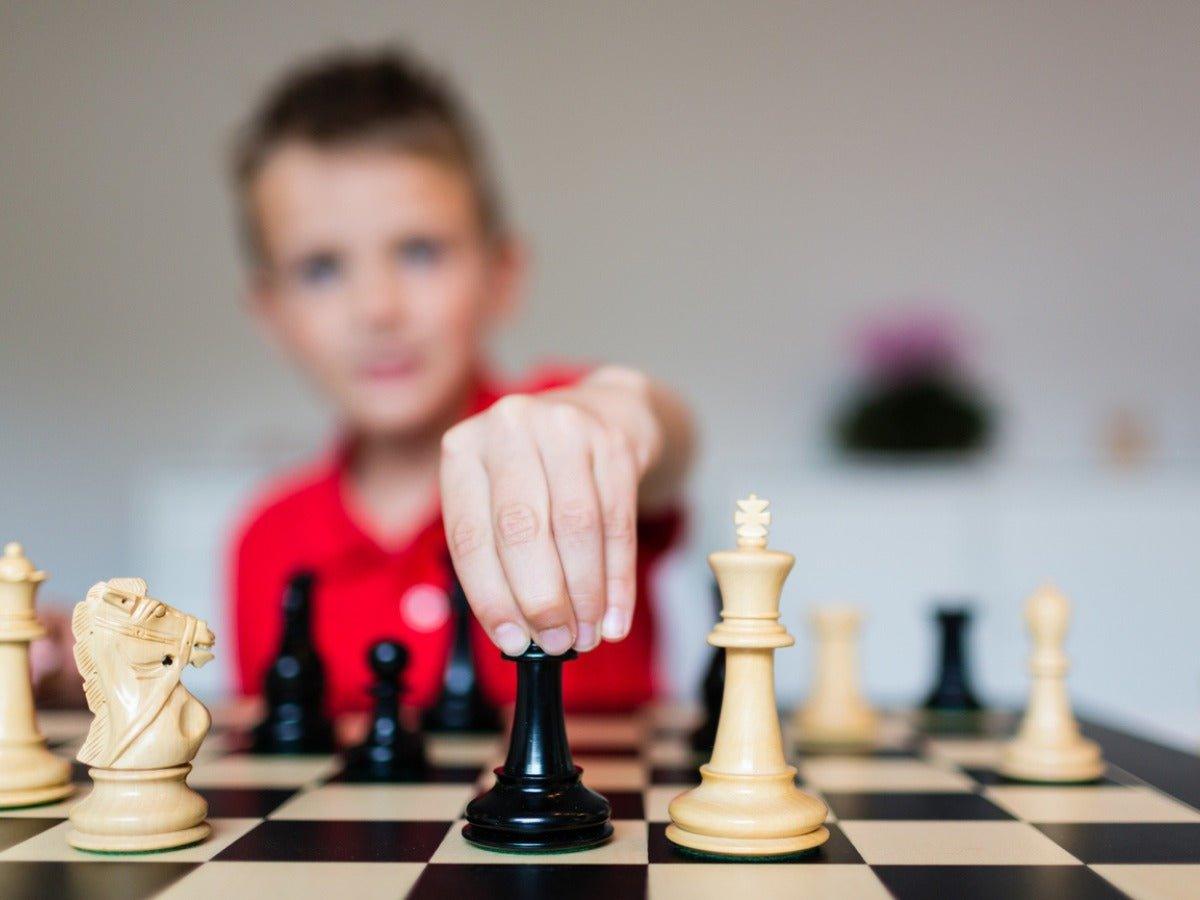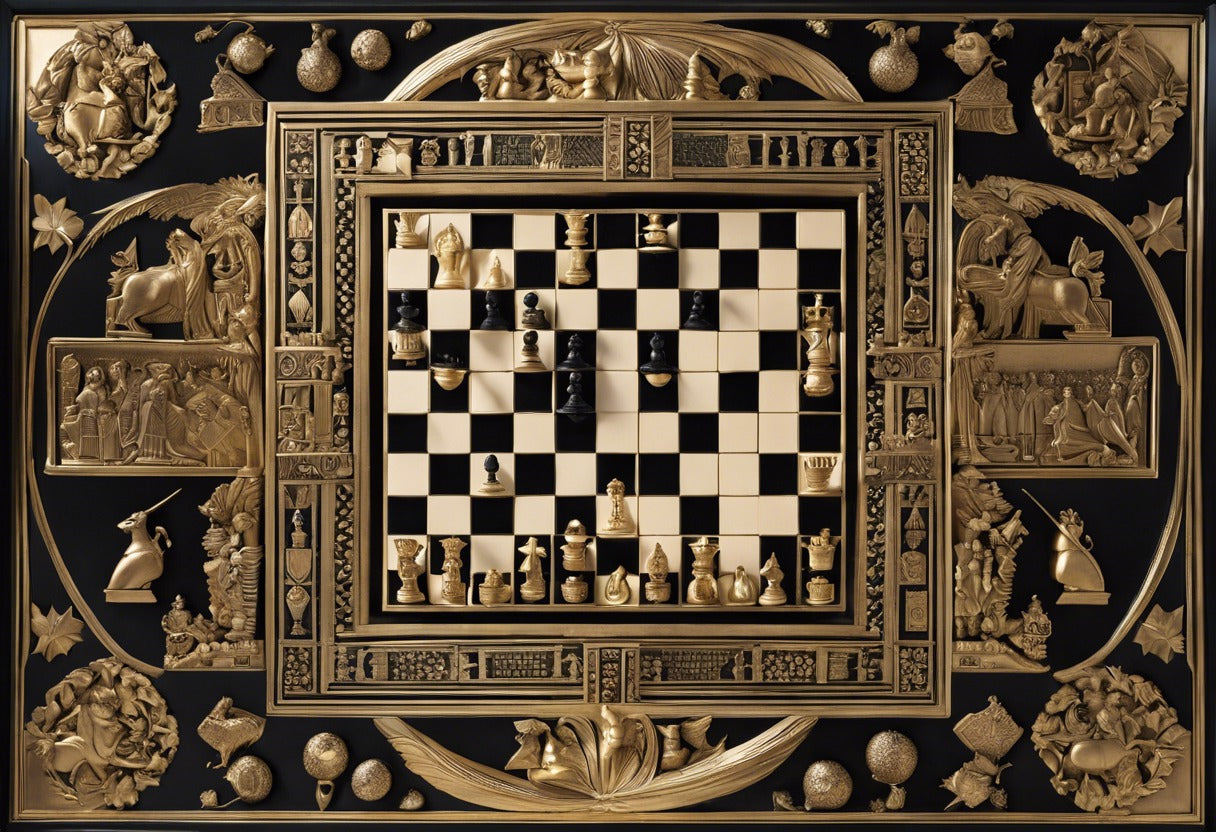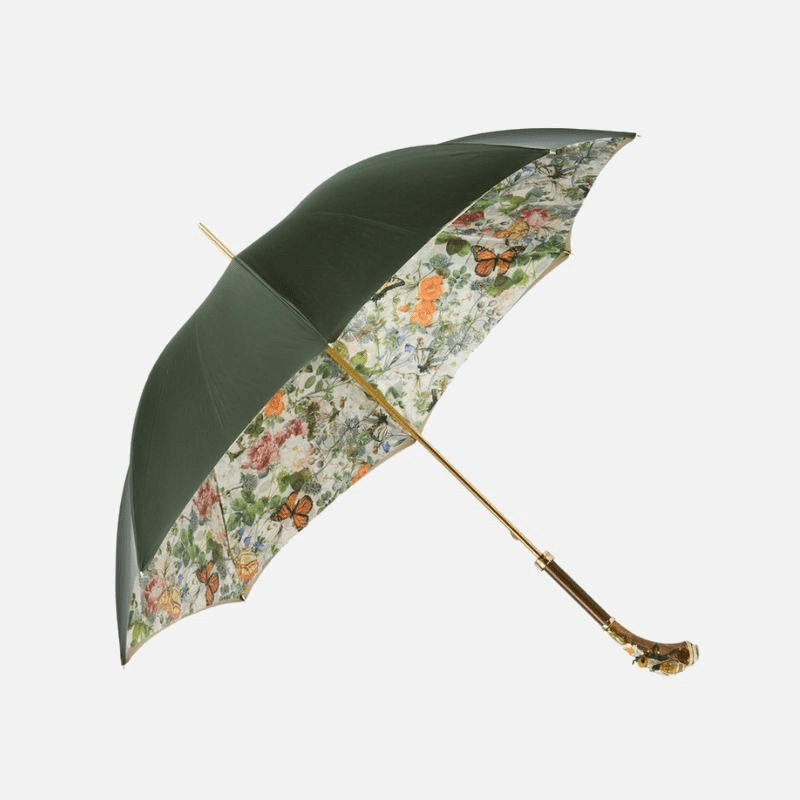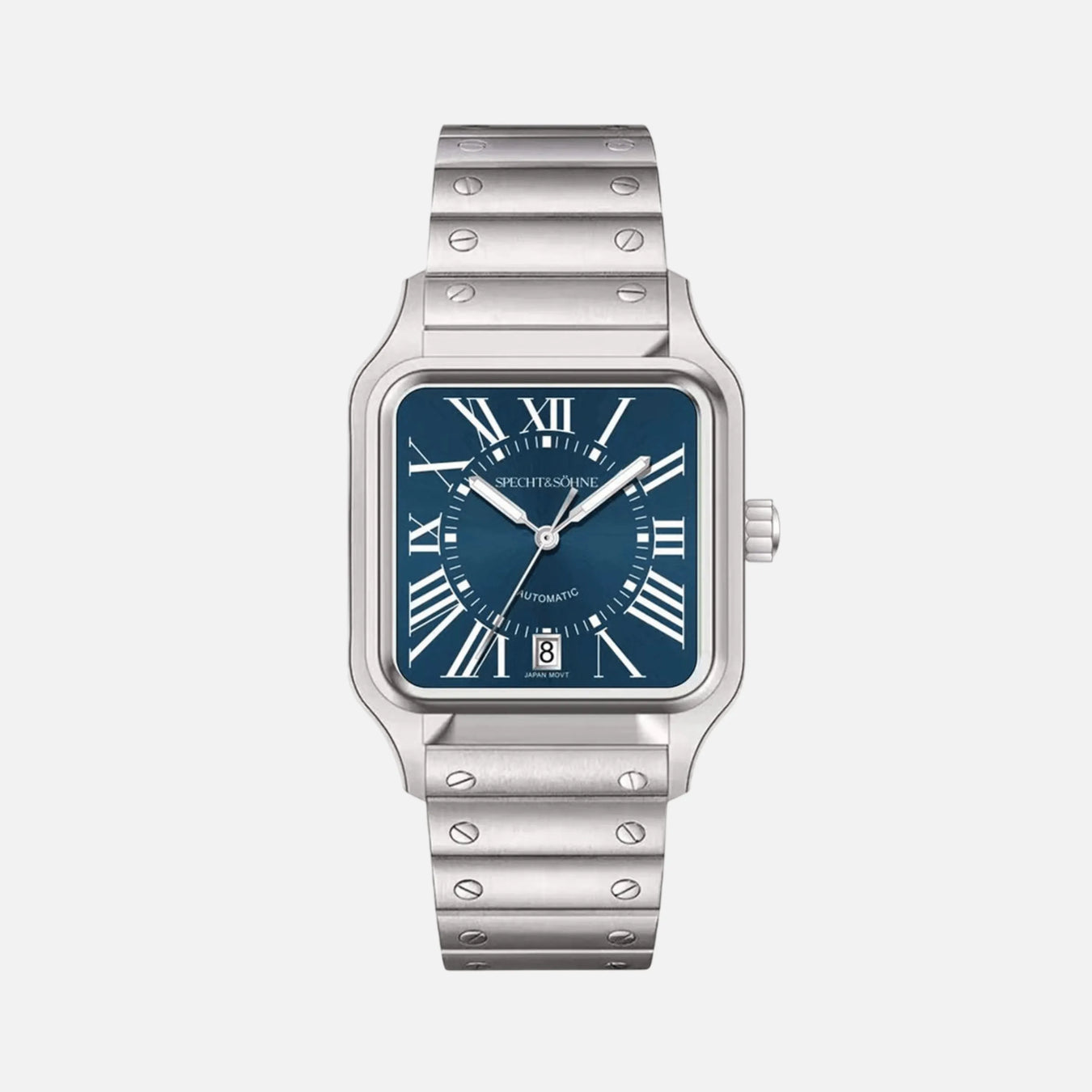
5 Ways Chess for Kids Enhances Creative Thought and Critical Skills
Introduction: The Cognitive Benefits of Chess for Children
Chess is not merely a pastime but rather a powerful educational tool that enhances the cognitive development and creative capacity of children. Structured around a set of wooden chess pieces, artfully crafted and often cherished as luxury items, this ancient game transcends its physical beauty to provide substantial mental benefits for its young players.
When children engage with the intricacies of chess, they are not merely moving beautiful chess pieces across a board; they are delving into a world that requires foresight, critical thinking, and problem-solving. The nature of the game necessitates that each player contemplates both their moves and those of their opponent, fostering a kind of strategic planning that can be applied beyond the 64 squares of the chessboard.
Moreover, the act of playing chess with a set of large wooden chess pieces, whether they are standard or luxury chess pieces, helps children to physically interact with the game, adding a tactile dimension to the cognitive processing involved. This physical aspect of the game is not to be underestimated, as it can greatly enhance a child’s connection to the activity and their resultant learning outcomes.
For parents considering a thoughtful gift for their child, a chess set can be a gift for dad and child alike, offering a medium through which to bond and share in the cognitive growth experience. It’s an investment in a child’s mental acuity, providing a pathway to enhanced creative thought and critical skills that will serve them in countless facets of life.
Indeed, as children navigate the challenges and triumphs of chess, they develop a suite of cognitive skills that are fundamental to success both in academic domains and in the broader sphere of their future personal and professional lives.
The Role of Chess in Fostering Problem-Solving Abilities

Chess is often celebrated not just as a game but as a tool for the enhancement of cognitive skills, particularly in nurturing problem-solving abilities in children. The game’s intrinsic demand for strategy and foresight turns every match into a dynamic puzzle, where the aim is to outmaneuver the opponent by anticipating their moves and devising appropriate counterstrategies.
When children engage with a set of wooden chess pieces, they are not merely moving artful figures; they are activating critical thinking circuits in their brains. Each move on the chessboard presents a new problem that requires a solution. Kids learn to recognize patterns, which strengthens their ability to forecast possible outcomes and understand the consequences of their actions.
Furthermore, chess teaches restraint and patience as youth players ponder over a set of large wooden chess pieces, analyzing multiple future scenarios before committing to a move. This continuous cycle of hypothesis, testing, and revision sharpens their analytical skills, a fundamental aspect of problem-solving.
Luxury chess pieces, often perceived as a beautiful chess piece of artwork, are also a source of motivation for children. The aesthetic appeal can trigger their interest in the game, which in turn feeds their cognitive development.
When considering a gift for dad that doubles as an educational tool for kids, a high-quality chess set can be an investment in a child’s intellectual growth. The process of facing an opponent and methodically working through various challenges and obstacles mimics real-life problems, building resilience and adaptive thinking.
Engagement with chess enables kids to approach problems not just with creativity but with a structured methodology that is widely applicable outside the game. The edification derived from this ancient game is timeless, turning each session over the chessboard into a valuable lesson in problem-solving.
Enhancing Imagination and Creativity Through Chess Strategy

The intricate strategies involved in chess are akin to a cerebral art form, as players must visualize a myriad of potential moves and outcomes. The association between a set of wooden chess pieces art 809125 and the development of creativity in young minds is profound. As children navigate the 64 squares, they learn to appreciate the aesthetic and tactical beauty of the game, which in turn fuels their imaginative capacities.
Incorporating chess into a child’s activities can expand their creative horizons beyond the conventional. Envisioning the game board as a battlefield, each piece becomes a character with strengths, weaknesses, and a vital role to play. This role-playing aspect imbued in luxury chess pieces transforms the game into a narrative, prompting kids to concoct stories and scenarios, thereby enhancing their creative storytelling skills.
Furthermore, the tactical nature of chess demands that players not only react to their opponent’s moves but also anticipate them. This foresight encourages lateral thinking, a key aspect of creativity. The use of beautiful chess pieces can serve as a gift for dad while simultaneously providing a vehicle for children to express their creativity and innovation by devising unorthodox strategies and unexpected maneuvers.
Lastly, the variety of chess sets — spanning from a set of large wooden chess pieces to modern designs — can stimulate a child’s aesthetic sensibilities, prompting them to reflect on the fusion of form and function. This sensitivity to the design can transcend the game, inspiring a child to apply this appreciation to other areas of artistic expression.
Chess serves not only as a catalyst for cognitive skill development but also as a medium through which imagination and creativity blossom, proving that this ancient game remains a relevant and powerful tool for modern education.
Chess as a Tool for Developing Concentration and Patience

In a world where digital distractions are omnipresent, the ancient game of chess serves as a powerful educational tool, particularly for children, to enhance concentration and cultivate patience. This strategic board game requires players to immerse themselves fully in the complexities of the board, translating into an improved ability to focus. Facing a set of wooden chess pieces art 809125, children learn to direct their attention to the immediate game, strategizing each move while anticipating their opponent’s response.
Engaging with a set of large wooden chess pieces fosters a physical connection to the game, adding a tactile dimension to the mental exercise. These luxury chess pieces also aesthetically enrich the learning environment, making the absorption process more inviting. As young minds maneuver beautiful chess pieces across the board, they inadvertently train their brains to perform deep work, a skill that is invaluable in all areas of life.
The slow-paced nature of chess is another crucial aspect in developing patience. Unlike many fast-paced video games, chess demands that one waits for the opponent’s move before proceeding, which teaches restraint and the value of thoughtful consideration. The experience is akin to unwrapping a gift for dad patiently, savoring the moment rather than rushing through it.
- Chess encourages children to:
- Think critically before making a move.
- Wait and observe the opponent’s strategy.
- Learn from their mistakes without immediate gratification.
Overall, by engaging with chess, children reinforce their capacity to concentrate for extended periods and grow more patient, transforming these practices into lifelong habits that extend beyond the chessboard.
Improving Memory and Cognitive Function via Chess Play

Chess, often touted as the ultimate intellectual game, can significantly enhance memory and cognitive function in children. The intricate nature of planning and executing moves necessitates a rigorous mental workout, engaging the brain’s problem-solving and decision-making areas. Each game of chess becomes a cognitive exercise that sharpens memory and hones executive functions.
The Role of Chess in Memory Improvement
When children engage with chess, they encounter a dynamic environment that demands accurate recall of rules, opponent strategies, and complex positions. This repeated practice naturally improves their memory. Chess reinforces the neural patterns responsible for both short-term memory—vital for planning a few moves ahead—and long-term memory, which helps in recognizing common patterns and sequences.
Cognitive Enhancements Through Chess
Regularly participating in chess games stimulates and challenges the brain. Cognitive gains from chess include:
- Enhanced problem-solving skills due to the requirement to anticipate and counteract the opponent’s moves.
- Improved concentration, as players must sustain attention to avoid blunders.
- Better planning and foresight, as long-term strategizing is a key element in successful gameplay.
- Increased spatial-temporal reasoning, which is the ability to visualize and manipulate objects in a spatial matrix.
Playing with a set of wooden chess pieces, particularly those of high-quality craftsmanship like luxury chess pieces or beautiful chess pieces, can also add a tactile element that further engages the senses, solidifying the cognitive benefits. And whether it is a gift for dad or a starter set for a young learner, the brain-building advantage of chess is universal.
In conclusion, chess is more than a game; it is a cognitive development tool. By regularly maneuvering through the strategic intricacies of the game, children can significantly enhance their memory and overall cognitive function, setting a strong foundation for future learning and mental agility.
Cultivating the Ability to Anticipate and Plan Strategically

When engaging with a set of large wooden chess pieces on the checkerboard battlefield, young minds are not only embracing a classic game but are also developing instrumental life skills. Chess acts as a catalyst for enhancing the ability to foresee potential scenarios and to devise multi-step strategies, crucial in a variety of real-life situations. It teaches children to look beyond the immediate consequences and to consider long-term outcomes, aligning closely with executive function skills that are pivotal for success in education and beyond.
Against an opponent, each player must predict possible moves and counter-moves, challenging them to think ahead and plan accordingly. This anticipatory skill is akin to a mental simulation of future events, honing their capacity to anticipate consequences before they unfold. By analyzing the arrangement of beautiful chess pieces on the board, children learn how to evaluate the ramifications of their own decisions and adjust their plans in the face of new information.
Here lies the true beauty of chess; it’s not just about the present move, but also about formulating a larger game plan. This strategic thought process reinforces their ability to:
- Identify the long-term goals and work backwards to develop a pathway to achieve them.
- Understand the importance of being adaptable and flexible, as even the most well-conceived strategies in chess require adjustments based on the opponent’s actions.
- Recognize patterns and analyze outcomes, essential for complex problem solving.
- Balance risk and reward, making calculated decisions on when to play defensively or launch an offensive.
A luxury chess set—perhaps a perfect gift for dad—thus becomes more than a round of competition; it is a training ground for the mind. Having the foresight to prepare for a series of possible moves equips children with a strategic mindset that will serve them in all walks of life.
Learning from Mistakes: Resilience and Critical Thinking in Chess

In chess, just as in life, mistakes are inevitable. It is how children respond to these mistakes that can cultivate resilience, a critical life skill. Chess for kids is an excellent platform for learning to bounce back from setbacks and to extract lessons from unsuccessful moves. When a child makes an error with a set of wooden chess pieces art 809125, the immediate consequence is visual and impactful, creating a memorable teaching moment.
For instance, employing a set of large wooden chess pieces, luxury chess pieces, can signify the seriousness of the game, encouraging a more thoughtful approach to decision-making. When a child overlooks a threat and loses a beautiful chess piece on the board, it underscores the need for vigilance and strategic planning. This hands-on experience fosters critical thinking, as children must analyze the implications of their moves, anticipate their opponent’s responses, and devise longer-term strategies for success.
Moreover, the iterative process of review and improvement is naturally embedded in learning chess. Kids are encouraged to study their past games - identifying both strong moves and blunders - which can lead to significant improvements in future play. The skill of learning from past experiences is invaluable and directly translates to better problem-solving abilities in diverse areas of life.
Lastly, chess can be a meaningful gift for dad and child alike, promoting bonding through shared learning experiences. As children learn to accept mistakes and treat them as opportunities for growth, they also learn that perfection is not the goal, but rather continuous improvement. This mindset, shaped by the challenges and intricacies of chess, lays the foundation for resilience and critical thinking across all pursuits.
How Chess Encourages the Growth of Logical Reasoning Skills

Among the various educational tools available, chess stands out as a unique catalyst for the enhancement of logical reasoning skills in children. The game, which might be played with a set of wooden chess pieces art 809125 or a set of large wooden chess pieces if preferred, requires participants to anticipate consequences, understand the logic behind the rules, and recognize patterns on the board.
When engaging in a chess match, each player must consider multiple variables and outcomes. The need to foresee the potential moves of the opponent fosters forward thinking and planning skills. With each move, players evaluate the risks and benefits, stimulating critical thinking. This ongoing process of hypothesis and consequence aligns with the foundational principles of logical reasoning.
Furthermore, chess introduces young minds to the concept of causality. A decision to move a particular piece not only affects that piece’s fate but can also alter the game’s course. Children learn that actions have direct consequences, which is a key component in developing logical thought processes.
The game’s inherent demand for strategy formulation also plays a significant role. One must create a plan based on logic to successfully navigate through the complexities of the game. This strategic planning helps in enhancing problem-solving abilities that are highly applicable in academic and real-life situations.
Lastly, luxury chess pieces or beautiful chess pieces can make the game more engaging, potentially serving as a gift for a dad seeking a fun, educational activity to share with his child. The tactile and visual qualities of well-crafted pieces can further stimulate the cognitive processes involved in logical reasoning.
In conclusion, chess serves as an excellent medium through which children can develop and refine logical reasoning skills, an asset that will benefit them throughout their lives.
The Impact of Chess on Mathematical Understanding and Achievement

Chess, often celebrated for its strategic intricacies, also enhances mathematical understanding and achievement among children. Engagement with chess has been repeatedly linked with improved math skills, serving as both a supplement and an engaging alternative to traditional math education.
When children play chess, they engage in complex decision-making processes, evaluating multiple variables and outcomes – much like the problem-solving required in mathematics. The game’s inherent need for players to anticipate the consequences of their moves fosters a form of logical and consequential thinking that aligns closely with mathematical reasoning.
Moreover, the pattern recognition skills honed while maneuvering a set of wooden chess pieces across the board have direct applications in mathematical understanding. Identifying sequences and understanding the patterns within those sequences aids in grasping mathematical concepts such as geometry and algebra.
Studies have indicated that children who regularly participate in chess programs show notable gains in math scores. The structured nature of the game, with its set rules and the need for systematic thinking, helps young minds to process and apply mathematical concepts more effectively.
Chess also encourages perseverance and focus, qualities that are invaluable when tackling complex mathematical problems. The deep concentration that is required to analyze the position of luxury chess pieces on a chessboard parallels the focus needed to solve math equations.
Furthermore, the game’s competitive edge serves as a motivator, pushing children to refine their mathematical skills in order to improve their gameplay. As a beautiful chess piece moves across the board, it represents a step-by-step approach to solving a problem, mirroring the sequential thinking utilized in mathematics.
Chess can even serve as a unique gift for dad, facilitating bonding experiences where both mathematical skills and chess strategies can be discussed and developed together.
In conclusion, the correlation between chess and enhanced mathematical abilities is supported by a growing body of evidence. This strategically rich game, utilizing a set of large wooden chess pieces or a digital equivalent, is an invaluable tool for boosting mathematical prowess among young learners.
Social Skills and Emotional Intelligence Gained From Chess Interactions

Chess is often thought of as a silent game of intense concentration, but it is fertile ground for the development of social skills and emotional intelligence, especially in children. The strategic nature of the game, which can be enhanced with a set of wooden chess pieces art 809125, encourages players to anticipate their opponents’ moves and intentions. Through this silent dialogue, children learn the art of empathy, putting themselves in their opponent’s shoes to predict their next move.
Engaging in chess interactions with peers or family members, possibly over a set of large wooden chess pieces, allows for the development of patience and self-control. Waiting for the other player to make their move reinforces the importance of taking turns and respecting the other player’s thought process. It isn’t just about waiting; it’s about observing and learning from the choices others make.
In competitive settings, children may experience a range of emotions - from the joy of winning to the disappointment of losing. These moments are invaluable for teaching young players to manage their emotions effectively. Learning to cope with loss in a constructive manner, for example, is a key aspect of emotional intelligence that is practiced naturally through chess.
Moreover, the interaction can lead to deeper social connections and understanding. Whether played with luxury chess pieces or beautiful chess pieces, the tactile nature of handling the chess pieces itself can be a soothing, bonding experience. Even considering the game as a gift for dad can be a gesture of deep emotional significance, symbolizing respect for cognitive and emotional engagement.
As children navigate the sophisticated dynamics of chess, they inadvertently enhance their social skills and emotional intelligence, preparing them for complex interpersonal interactions beyond the chessboard.
Chess in Education: Incorporating the Game into School Curricula

Inculcating chess into educational institutions brings a plethora of cognitive benefits to the table. Administrators and educators consider the time-honored game an invaluable asset for developing young minds. Schools worldwide have begun to strategically include chess in their programs, recognizing its potential to enhance critical thinking, strategic planning, and problem-solving skills among students.
Integrating chess into school curricula requires a structured approach, often starting with incorporating it into extracurricular activities or as part of a physical education program. As students engage with a set of wooden chess pieces, they not only learn the rules of the game but also the art of patience and foresight. Each move on the chessboard using a set of large wooden chess pieces encourages them to think ahead and consider the consequences of their actions, a skill readily transferable to real-life situations.
For those schools aiming to provide an opulent experience, luxury chess pieces serve as more than just equipment; they symbolize the prestige of the game and its educational value. Schools might also choose beautiful chess pieces as a gift for dad on occasions like Father’s Day, highlighting the game’s role in fostering family bonding through thoughtful strategy.
Moreover, chess has also been integrated into mathematics and logic curriculums. The game’s need for geometric thinking and pattern recognition aligns with mathematical concepts, thus reinforcing lessons taught in the classroom. A secondary, yet pivotal, benefit arises from the inclusivity chess offers: students of all abilities can participate, making it a universally accessible educational tool.
Ultimately, the game of chess serves as a dynamic educational tool, forging connections between intelligence and character. With each knight or rook moved, students not only learn a new strategy but also cultivate lifelong skills that transcend the boundaries of the traditional classroom.
Case Studies: Success Stories of Young Chess Enthusiasts

The strategic game of chess is not just a pastime; it’s a powerful tool for developing young minds. Across the globe, young chess enthusiasts are using the game to enhance their creativity and critical thinking skills. Their success stories are a testament to the benefits chess can bring into a child’s life.
One remarkable example is a ten-year-old prodigy from New York who began playing chess with a set of large wooden chess pieces his father gifted him. Initially a gift for dad that sparked curiosity, these luxury chess pieces became the child’s tools for mastering the game. Within two years, this youngster was competing at national levels, praised for his unforeseen strategies and creative play.
In rural India, a group of children with limited resources gathered around a set of wooden chess pieces, art 809125 in their simplicity. This set became their gateway to an international competition where one girl, aged twelve, astounded spectators with her ingenious maneuvers. Her success story has inspired many in her community to view chess as a means to both intellectual and personal growth.
Similarly, an after-school club in London provided beautiful chess pieces for its members to practice. Here, a young girl found her passion, sharpening her critical thinking with every game. She credits chess for her improved problem-solving abilities, which bizarrely led to her interest in mathematics and subsequently winning a regional math competition.
These young enthusiasts display how chess can be both a gift and a skill enhancer, proving that with dedication, the ancient game continues to cultivate young minds. Whether with a simple set or luxury chess pieces, these success stories embody the transformative power of chess for kids.
Tools and Resources to Introduce Chess to Kids Effectively
Introducing chess to children can be a fulfilling endeavor. To ensure a smooth learning experience, equip them with the right tools and resources. Begin with a set of large wooden chess pieces; their substantial size can make the game more tangible and enjoyable for young players. When selecting a chess set, aim for durability and visual appeal—something like an art 809125 set, which often comes with beautifully crafted pieces, may both captivate and withstand the enthusiastic handling by kids.
Here’s a list of additional resources and tools that can help:
- Chess Apps: Many applications are designed to teach chess in a fun, interactive way. These are particularly helpful for kids who are comfortable with digital devices.
- Instructional Books: Choose books that are written specifically for children, with simple language and vivid illustrations to explain the rules and strategies of chess.
- Online Courses: Various online platforms offer courses for different age groups and skill levels, often featuring engaging video lessons.
- Chess Puzzles: To develop problem-solving skills, provide kids with chess puzzles. This can be in the form of books or online resources suited to their level.
- Clubs and Camps: Encourage participation in local chess clubs or camps where kids can learn from more experienced players and make friends with similar interests.
- Magnetic Chess Sets: For the family on-the-go, a magnetic chess set allows kids to play in the car, on the plane, or during other travel without pieces sliding around.
- Luxury Chess Pieces: Gifting a luxury chess set can serve as a special reward and motivation. It can be a beautiful addition to a family game room and a coveted gift for dad as well.
By providing a mix of tactile and digital learning resources, parents and educators can create an inviting and stimulating environment that not only teaches children how to play chess but also encourages the development of critical thinking and creativity.
Conclusion: Integrating Chess Into Child Development for Holistic Growth

Integrating chess into a child’s developmental activities can serve as a catalyst for holistic growth, engaging multiple facets of their evolving intellect and personality. The strategic game, often encompassed by a set of large wooden chess pieces, is more than a mere pastime. It is a bridge to higher cognitive functions and creativity, encouraging children to visualize, plan, and execute with precision—a skill set applicable both on the chessboard and in real-life scenarios.
Involving children in the game of chess can have a profound impact on their critical thinking capabilities. As they navigate through the complex interactions between the beautifully crafted pieces, they learn to anticipate outcomes and consider consequences. This experience imprints the importance of foresight and strategic planning. A set of wooden chess pieces, art intricately designed, becomes a canvas for children to paint their tactical ingenuity.
Moreover, luxury chess pieces are not just tools for the game but can also act as a gift for dad, serving a dual purpose of enhancing bonding time through shared gameplay while simultaneously fostering cognitive development in the child. The aesthetic appeal and the tactile sensation of the pieces can add to the overall experience, making the learning process more enjoyable and memorable.
The integration of chess into child development should be seen as an investment. It’s an investment in their problem-solving abilities, their patience and concentration, and their ability to think creatively within structured parameters. The timeless game of chess, with its complex rules and infinite outcomes, offers invaluable lessons that extend far beyond the checkered board. It equips young minds with the ability to dissect and solve complex problems, preparing them for challenges they will face throughout life. By embracing the multifaceted educational benefits of this ancient game, parents and educators lay down a foundation for children’s lifelong success and adaptation to an ever-evolving world.






